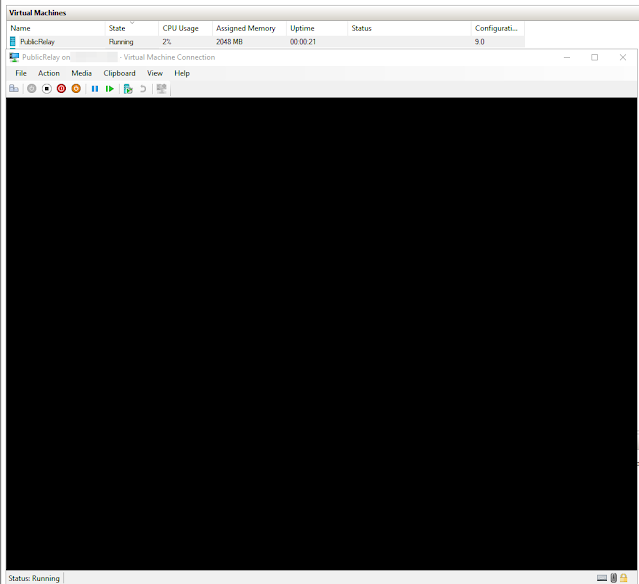Setting up an SMTP Email Relay or Email Forwarder are used in organizations where applications that need to send email can where it is not dependent on an individual being logged in. The typical example would be for email marking, but it can also be for the Photocopier in the office or any other number of commonly used devices that people use where it sends email. The relay service allows you to use a generalized email setup by the organization. Most commonly these are setup as "no-reply" or something to that effect. To facilitate the setup of the mail forwarder/relay we will be using a Google Non-Profits email account. The first thing you will need to do is setup the account, then login to the account and setup the account for use with "less secure app access".
Create the account, and set the password. In this case I am using something called myemailservice
Then login to the account and setup "less secure app access" you can do this by using this link https://myaccount.google.com/lesssecureapps or by managing your Google Account as shown below.
When installing Ubuntu Server I am going to do my typical setup; minimized, no GUI, Live patching, vim, Powershell and ssh access for the default install.
After installation login and update the system, and set your timezone. By default ETC is typically used. If you know your timezone like I do you can manually specify it.
sudo timedatectl set-timezone America/Edmonton
To verify the setting use the command timedatectl or ls -l /etc/localtime
sudo apt-get install postfix and set the mail configuration to "Internet Site"
Postfix doesn't natively support SASL authentication so we must install a module for SASL authentication support. You can read more about it here
https://www.postfix.org/SASL_README.html
sudo apt-get install libsasl2-modules postfix mailutils
sudo vi /etc/postfix/main.cf and set myhostname to the FQDN
Then we need to add the following
relayhost = [smtp.gmail.com]:587
smtp_sasl_auth_enable = yes
smtp_sasl_password_maps = hash:/etc/postfix/sasl_passwd
smtp_sasl_security_options = noanonymous
smtp_use_tls = yes
Also don't forget to add any networks you want to be able to send email from via smtp. You will have to add the host or network range to the mynetworks variable as shown below.
Now we need to make our password map. This will allow us to connect to the google account we are going to use to send the emails via smtp. The file will be located in /etc/postfix/sasl_passwd
sudo vi /etc/postfix/sasl_passwd
in the file put the following
[smtp.gmail.com]:587 $youremailaccount:$accountpassword
and save and exit.
Change the permissions of the file so it is only readable by root
sudo chmod 600 /etc/postfix/sasl_passwd
restart postfix to apply our changes.
sudo systemctl restart postfix
To test our setting use the following
echo "This is a test email body." | mail -s "Subject" -a "From: $fromemail@yourdomain.ca" youremail@domain.ca
I also use this depreciated powershell command for testing as well
Send-MailMessage -From '$fromemail@domain.ca' -To '$toemail@domain.ca' -Subject '$SomeSubject' -smtpserver 'DNS or IP to relayserver' -port '25'
Here are some important commands you will want to keep when using the relay server
postqueue - p
run all messages
sendmail -q
get mail queue
postqueue -f
flush the mail queue
Sources
https://www.faqforge.com/linux/how-to-relay-email-from-postfix-mail-server-to-gmail-on-ubuntu/
https://www.tutorialspoint.com/configure-postfix-to-use-gmail-smtp-on-ubuntu


















